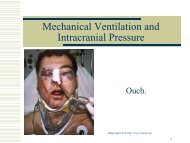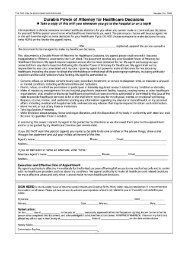Implementing Neuroscience Principles to Support Habilitation and ...
Implementing Neuroscience Principles to Support Habilitation and ...
Implementing Neuroscience Principles to Support Habilitation and ...
Create successful ePaper yourself
Turn your PDF publications into a flip-book with our unique Google optimized e-Paper software.
TABLE 8-6<br />
Functions of the Major Nuclei of the Thalamus<br />
Thalamic Nucleus Cortical Connection Function <strong>Support</strong>ed<br />
Anterior limbic system emotional <strong>to</strong>ne<br />
Dorsomedial prefrontal lobe judgementlreasoning<br />
Centromedian reticular system generalized arousal<br />
Intralaminar<br />
Midline<br />
Ventral Anterior<br />
Ventral Lateral<br />
Pulvinar<br />
Ventrobasal Complex<br />
*VP Lateral<br />
*VP Medial<br />
*VP Inferior<br />
Lateral Geniculate Body<br />
Medial Geniculate Body<br />
posterior frontal lobe<br />
association areas<br />
parietal lobe<br />
occipital lobe<br />
temporal lobe<br />
mo<strong>to</strong>r functions<br />
higher cognitive thought<br />
sensory mapping (i.e.,<br />
soma<strong>to</strong>sensory,<br />
soma<strong>to</strong>sensory.<br />
vestibular)<br />
visual system functions<br />
audi<strong>to</strong>ry system functions<br />
are all indications of a loss of the balance of power in the basal<br />
ganglia <strong>and</strong> associated structures. These clinical signs can be<br />
disruptive <strong>to</strong> functional performance by interrupting ongoing<br />
activity, or making it hard <strong>to</strong> engage in the activity at all.<br />
Many believe it is erroneous <strong>to</strong> consider the function of<br />
the sensory <strong>and</strong> mo<strong>to</strong>r systems separately, <strong>and</strong> thus refer <strong>to</strong><br />
these networks as the sensorimo<strong>to</strong>r system (e.g., Moore,<br />
1980; Dunn, 1991 a; K<strong>and</strong>el, Schwartz & Jessell, 1991 ). The<br />
CNS receives information from the sensory organs, processes<br />
the sensory information, creates possible responses, filters<br />
them through the internal mo<strong>to</strong>r circuitry, <strong>and</strong> produces a<br />
mo<strong>to</strong>r response, which is executed by the mo<strong>to</strong>r neurons <strong>and</strong><br />
musculoskeletal system. The mo<strong>to</strong>r systems cannot operate<br />
without sensory information, either during the current event<br />
requiring a response, or from memories of prior events which<br />
helped <strong>to</strong> construct maps of the body <strong>and</strong> the environment.<br />
Thalamic Integration<br />
The thalamus is an integrating structure that sits in the<br />
center of the brain (Figure 8-1 1). It is a critical structure<br />
because every single stimulus that goes <strong>to</strong> <strong>and</strong> from the<br />
brain (except olfaction) must travel through the thalamus.<br />
This gives the thalamus a big responsibility, that of organizing<br />
input <strong>and</strong> output so that it serves an optimal purpose in<br />
helping the organism <strong>to</strong> respond properly. Table 8-6 contains<br />
a summary of the major nuclei of the thalamus, their system<br />
connections <strong>and</strong> the general function each nucleus supports.<br />
Mo<strong>to</strong>r Control<br />
Mo<strong>to</strong>r control is the ability <strong>to</strong> manage one's body for<br />
movement (Dunn, 199 1 b), but is different from praxis (see<br />
cognitive section below). We use movement schema that we<br />
have created from experience or practice <strong>to</strong> make our movements<br />
more efficient. The mo<strong>to</strong>r cortex supports the sequencing,<br />
timing <strong>and</strong> maintenance of control over movements; all<br />
the mo<strong>to</strong>r centers of the brain rely on sensory information <strong>to</strong><br />
activate the desired movements. There are several questions<br />
that therapists can ask themselves <strong>to</strong> identify mo<strong>to</strong>r control<br />
iswes that may be interfering with performance (Dunn,<br />
1991 c): Table 8-7 contains these questions.<br />
<strong>Principles</strong> for Designing Therapeutic<br />
Interventions Based on Mo<strong>to</strong>r System<br />
Functions<br />
The EHP framework outlines five intervention approaches<br />
that can be used <strong>to</strong> provide therapeutic supports. The five<br />
interventions acknowledge the ways that therapists can<br />
address not only person-related variables, but also task <strong>and</strong><br />
context variables that can affect performance.<br />
Estublish/res<strong>to</strong>re interventions address person variables; the<br />
therapist identifies the person's skills <strong>and</strong> abilities, <strong>and</strong><br />
designs interventions <strong>to</strong> improve them. When therapists





